Graphics Reference
In-Depth Information
(a)
ϕ
ω Phase Phase difference
ψ
Difference of the apparent frequencies
Apparent frequency
θ
κ
Degree of the coherence
Differentiator
Differentiator
ϕ
B
ϕ
A
ψ
A
κ
ψ
B
κ
+
+
s
s
-
-
Rhythm controller
operation A
(Oscillator A)
Rhythm controller
operation B
(Os
cilla
tor B)
θ
B
θ
A
-
+
-
+
ω
B
ω
A
(b)
B-interaction
Computation of
degree of the
coherence
Computation of
degree of the
coherence
κ
κ
ϕ
A
ϕ
B
ψ
A
ψ
B
+
+
-
-
Rhythm controller
operation A
(Oscillator A
)
Rhythm controller
operation B
(Osc
illato
r B)
θ
B
θ
A
-
+
-
+
ω
B
ω
A
A-interaction
Fig. 17 Creation model of entrainment. a Single model. b Dual model
5 Conclusion
We describe experimental results using a rhythm controller developed for exam-
ining the relationship between the co-emergence of spatiotemporal Ma (or Maai)
and entrainment. We concretely show that when Maai is co-created, entrainment in
multiple cycles occurs in pre-stored action (subconscious bodily action) or in the
rhythm controller waveform that precedes the purposive action (avatar motion). We
also show that humans realize the co-emergence of the improvisational Maai by
changing the controller operational method depending on the situation. Further-
more, we explain that entrainment in multiple cycles is a soft coherence between
soft interfaces created by physical functions; i.e., it is a soft entrainment.
We believe that the signi
!
cance of the study about human communication using
the rhythm controller is to examine the action without separating the action from the
mental and physical functions that create the action. We think that the rhythm





















































































































